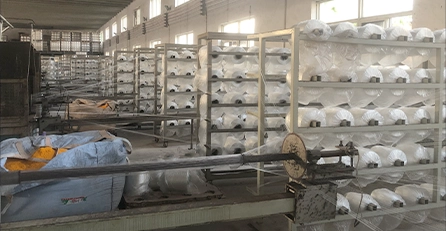vacuum hose
Understanding the Importance of Vacuum Hoses in Automotive Systems
Vacuum hoses are often overlooked components of most automotive systems, yet they play a crucial role in the overall functionality and efficiency of a vehicle. These flexible tubes are responsible for transferring vacuum pressure from various components of the engine to different systems and accessories, facilitating a range of operations that ensure a car runs smoothly. Understanding vacuum hoses and their significance can help car owners and enthusiasts appreciate their essential role in vehicle performance.
What Are Vacuum Hoses?
Vacuum hoses are typically made of rubber or silicone, designed to withstand the high temperature and pressures found within the engine. They come in various diameters and lengths, tailored to fit specific applications within the vehicle. Often, these hoses are black and relatively inconspicuous, making them easy to miss during routine maintenance checks. However, their purpose extends beyond mere aesthetics; they act as conduits for vacuum pressure, crucial for operating several engine components.
Functions of Vacuum Hoses
The primary function of vacuum hoses is to transport negative pressure to various parts of the engine. This negative pressure aids in operating systems such as the brake booster, which helps create sufficient force for effective braking. In addition, vacuum hoses play an essential role in operating emissions control devices, fuel vapor management systems, and even some throttle actuators.
1. Brake System One of the most critical uses of vacuum hoses is in the braking system. Most modern vehicles utilize a brake booster, which relies on vacuum pressure to amplify the force applied to the brake pedal. A malfunctioning vacuum hose can lead to reduced braking efficiency, potentially putting the driver and passengers at risk.
vacuum hose

2. Emissions Control Vacuum hoses also contribute to the vehicle's emissions control systems. These systems manage the release of harmful gases from the engine, ensuring that the car meets regulatory standards. Vacuum pressure assists in the proper operation of components like the EGR (Exhaust Gas Recirculation) valve and canister purge valve, which are instrumental in reducing emissions.
3. Fuel Management Additionally, vacuum hoses are involved in fuel management. They help regulate fuel pressure and supply, which is essential for maintaining optimal engine performance and fuel efficiency. Issues with vacuum hoses can result in poor fuel economy and increased emissions.
Common Issues with Vacuum Hoses
Despite their importance, vacuum hoses can be susceptible to wear and tear. Over time, exposure to heat, oil, and other contaminants can cause these hoses to crack, become brittle, or even break. Symptoms of a problematic vacuum hose may include rough idling, engine misfires, increased fuel consumption, and illuminated warning lights on the dashboard.
Routine inspection of vacuum hoses should be part of regular vehicle maintenance. A simple visual check can often reveal cracks or disconnections. If any signs of damage are detected, it’s crucial to replace the vacuum hoses promptly to avoid further issues.
Conclusion
In summary, vacuum hoses are integral to the smooth operation of automotive systems. They serve essential functions that impact everything from braking efficiency to emissions control and fuel management. For vehicle owners, recognizing the role of these unassuming hoses is vital for proper vehicle maintenance. Regular inspections and timely replacements can enhance vehicle performance, ensure safety, and contribute to a cleaner environment. The next time you pop the hood, take a moment to appreciate the importance of vacuum hoses in keeping your car running at its best. Understanding and caring for these components can save time and money in the long run, making them an important aspect of automotive awareness.
-
Welded Wire Mesh Panel: Durable, Versatile, and AffordableNewsJul.28,2025
-
Top Quality Oxy Acetylene Hoses for Sale Fit for Welding DemandsNewsJul.28,2025
-
The Future of Pneumatic Air Tubes in IndustryNewsJul.28,2025
-
Superior and Reliable LPG Hose Pipe Solutions for Every NeedNewsJul.28,2025
-
Exceptionally Durable and Versatile Premium Braided PVC TubingNewsJul.28,2025
-
Best Adapters for Connecting Garden Hose to PVC Pipe ConnectionsNewsJul.28,2025














